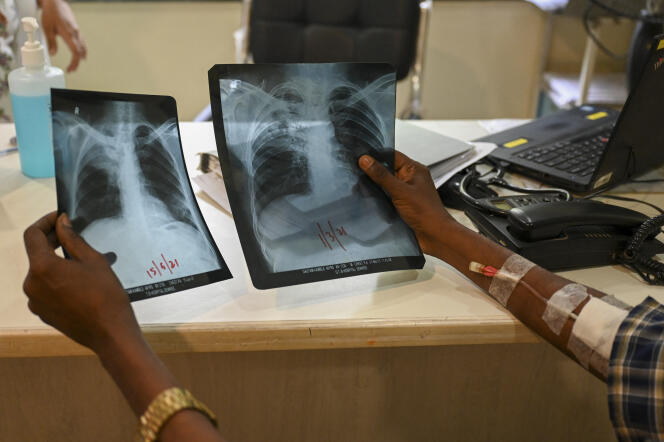


In the often hushed world of international health authorities, the words of Guy Marks, president of the International Union Against Tuberculosis and Lung Disease, stand out. On World TB Day, Sunday, March 24, the professor warned in a press release that the incidence of the infectious bacterial disease in the hardest-hit countries (Bangladesh, China, India, Nigeria, Pakistan and the Democratic Republic of Congo) was declining at a "glacially slow" pace. "We must be brave and recognize that the current strategy to end TB in high-burden countries is not achieving the results we hoped for," he said.
The main source of his disappointment lies in screening deficiencies. The Koch bacillus, which causes the disease, killed 1.3 million people in 2022, according to the World Health Organization (WHO). And 3.1 million of the estimated 10.6 million new cases went undetected by health services. Experts have dubbed these the "missing millions." Difficulties in accessing care partly explain this discrepancy.
However, according to Marks, patients often go undetected "because they do not experience or recognize symptoms." As a result, the Union considers it "vital" to carry out "widespread testing" of the population in high-incidence settings, beyond symptomatic individuals and at-risk groups.
Several studies have sought to assess the proportion of subclinical tuberculosis, i.e. with few or no symptoms; a meta-analysis appeared in the journal The Lancet Infectious Diseases on March 12. The researchers, led by Frank Cobelens, professor at the Amsterdam Institute for Global Health and Development, reviewed 12 studies in Africa and Asia involving 600,000 people, including 1,900 patients. They tested three definitions of subclinical tuberculosis: "no persistent cough" beyond two weeks, "no cough at all" and "no symptoms," namely, absence of cough, fever, chest pain, night sweats and weight loss.
The analysis suggests that the proportion of subclinical tuberculosis reaches 59% under the first definition, 40% under the second and 20% under the third. However, these findings are preliminary: According to the researchers, the studies considered may have missed patients due to errors in lung X-ray diagnoses or due to missing or unusable confirmatory biological cultures. After adjusting for these biases, the results showed that 83% of patients had no cough lasting longer than two weeks and 62% had no cough at all. "Since, in routine health care, persistent cough is often the entry symptom for the tuberculosis diagnostic pathway," said the researchers, "these people will face long diagnostic delays or might not be diagnosed at all."
You have 59.38% of this article left to read. The rest is for subscribers only.
